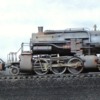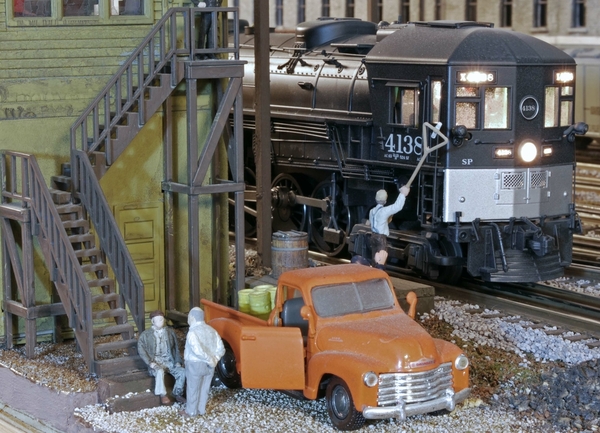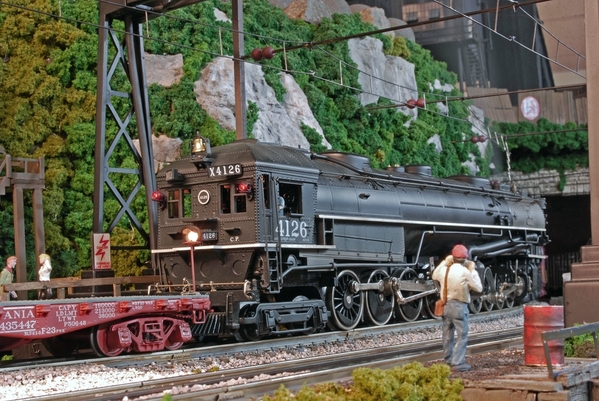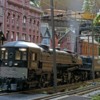Here is a photo of a real Cab-Forward steam locomotive. Cab-forward steam locos were often used in long tunnels to keep from asphyxiating the crew with smoke fumes by moving the cab in front if the stack by running the loco in reverse.
I will start with my homemade one.
Years ago I purchased a Lionel 2025 2-6-4 steam locomotive that came with a homemade enclosed cab and white wall painted wheels. I left both intact. The Lionel 2025 and 2035 are my favorite engines to run on my layout.
My closed cab Lionel 2025 with white walls
Next was to make a hookup connector from the front of my 2025 steamer to the front of the oil tender at the tender slot coupling. I know a Lionel 2025 2-6-4 is not a 4-8-8-2 which would have no chance of running on my O27 track !
Top view of sheet metal connector with tabs going on top of front wheel axle
View of connector in action, it turns well and navigates my O27 Marx 1590 switches
Lionel 2025 as Cap-Forward engine pulling oil tender (an oil tender must be used as there is no way to get coal from a coal tender to the fire box with the cab in the front of the train)
Connector is strong enough to pull other cars after the oil tender
The connector was quick and easy to make and works well. It is a little weird to see a steam locomotive tooling around the layout backwards !
Lets see your Cab-Forward Loco
Charlie




























